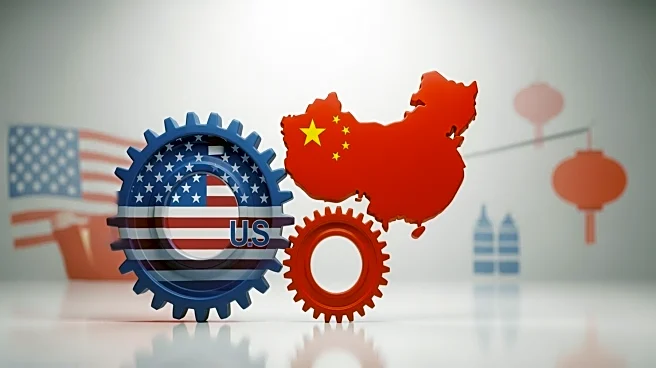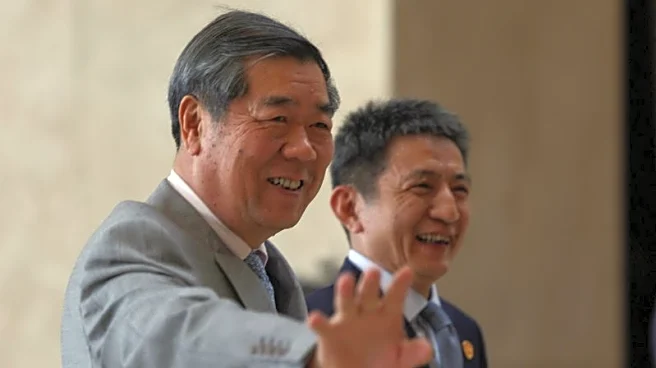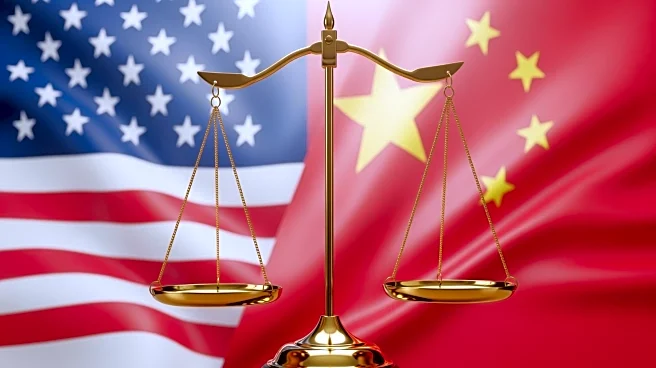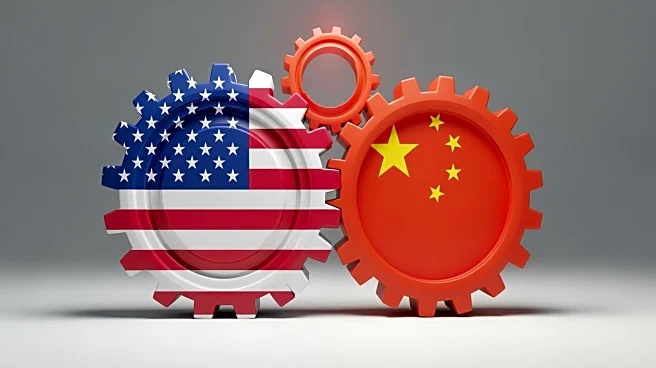What's Happening?
Recent trade negotiations between the United States and China in Kuala Lumpur have resulted in a temporary truce, particularly concerning the export of rare earth minerals. This development comes as the U.S. had threatened to impose 100 percent tariffs
in response to China's restrictions on rare earth exports. The framework agreement suggests that China will resume purchasing U.S. soybeans and delay its rare earths embargo for at least a year. The talks also touched on other issues, such as the TikTok deal and joint efforts to address the fentanyl crisis. However, a final deal is contingent on an upcoming meeting between Presidents Xi Jinping and Donald Trump in South Korea.
Why It's Important?
Rare earth minerals are crucial for various high-tech and military applications, making them a significant point of leverage in U.S.-China trade relations. The temporary truce provides some stability to markets and offers a reprieve from potential disruptions in supply chains. However, it also highlights the ongoing dependency of the U.S. on Chinese rare earths, underscoring the need for diversification of supply sources. The outcome of these negotiations could have long-term implications for global trade dynamics and the strategic positioning of both nations.
What's Next?
The upcoming meeting between Presidents Xi and Trump will be critical in determining the final outcome of the trade negotiations. Policymakers in the U.S. are likely to continue efforts to secure alternative sources of rare earths to reduce dependency on China. This situation may prompt further discussions on trade policies and the need for a more resilient supply chain strategy. The temporary nature of the truce suggests that further negotiations and potential conflicts could arise in the future.
Beyond the Headlines
The reliance on Chinese rare earths poses ethical and strategic challenges for the U.S., as it navigates the balance between economic interests and national security. The situation also raises questions about the sustainability of current trade practices and the need for innovation in sourcing critical materials. The broader geopolitical implications of the U.S.-China trade relationship continue to influence global economic policies and alliances.













